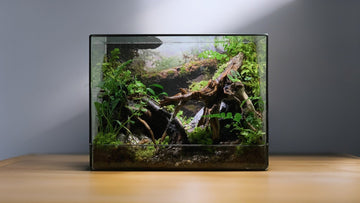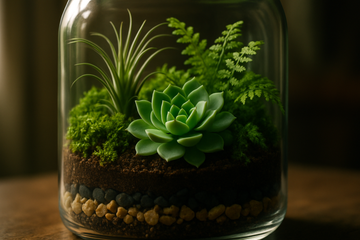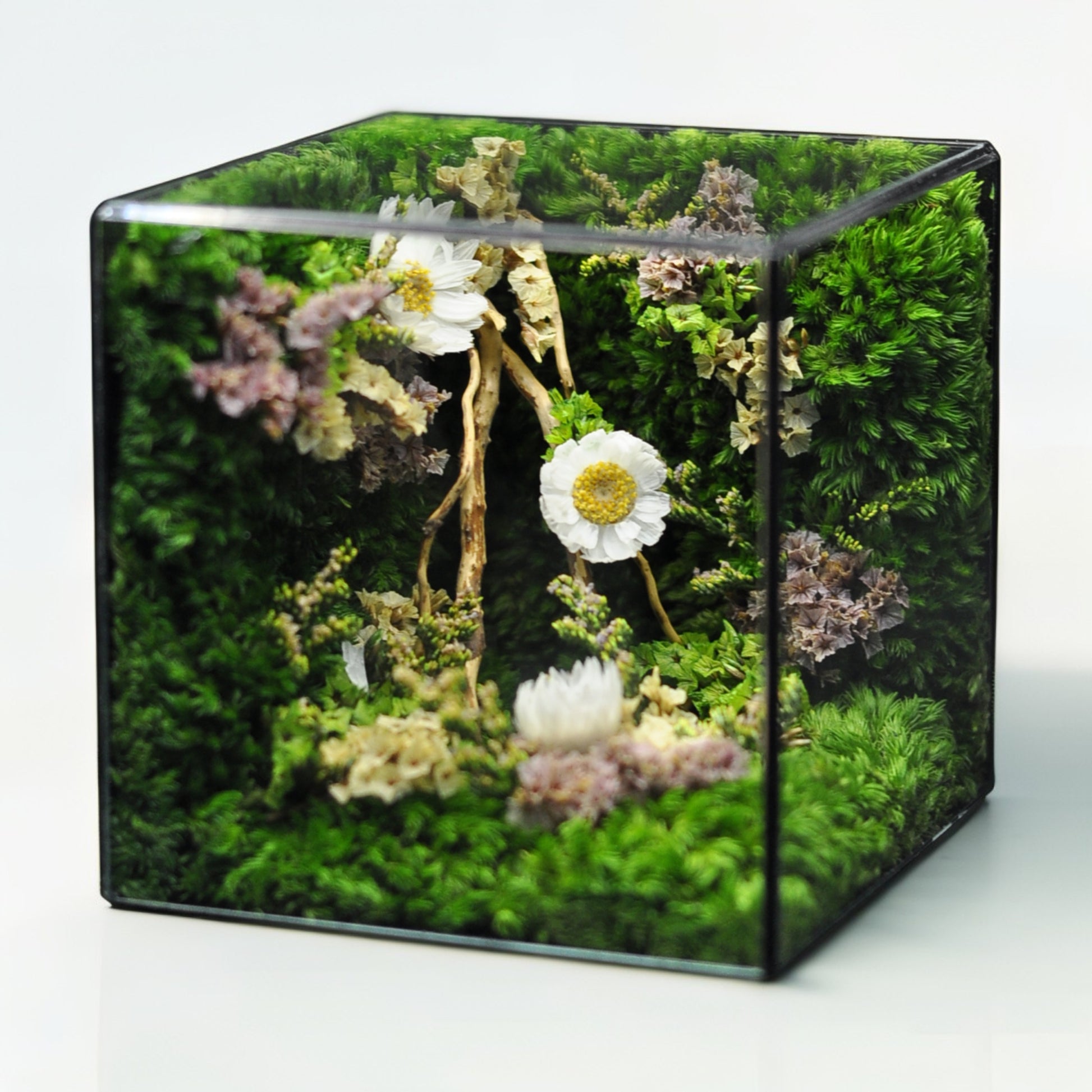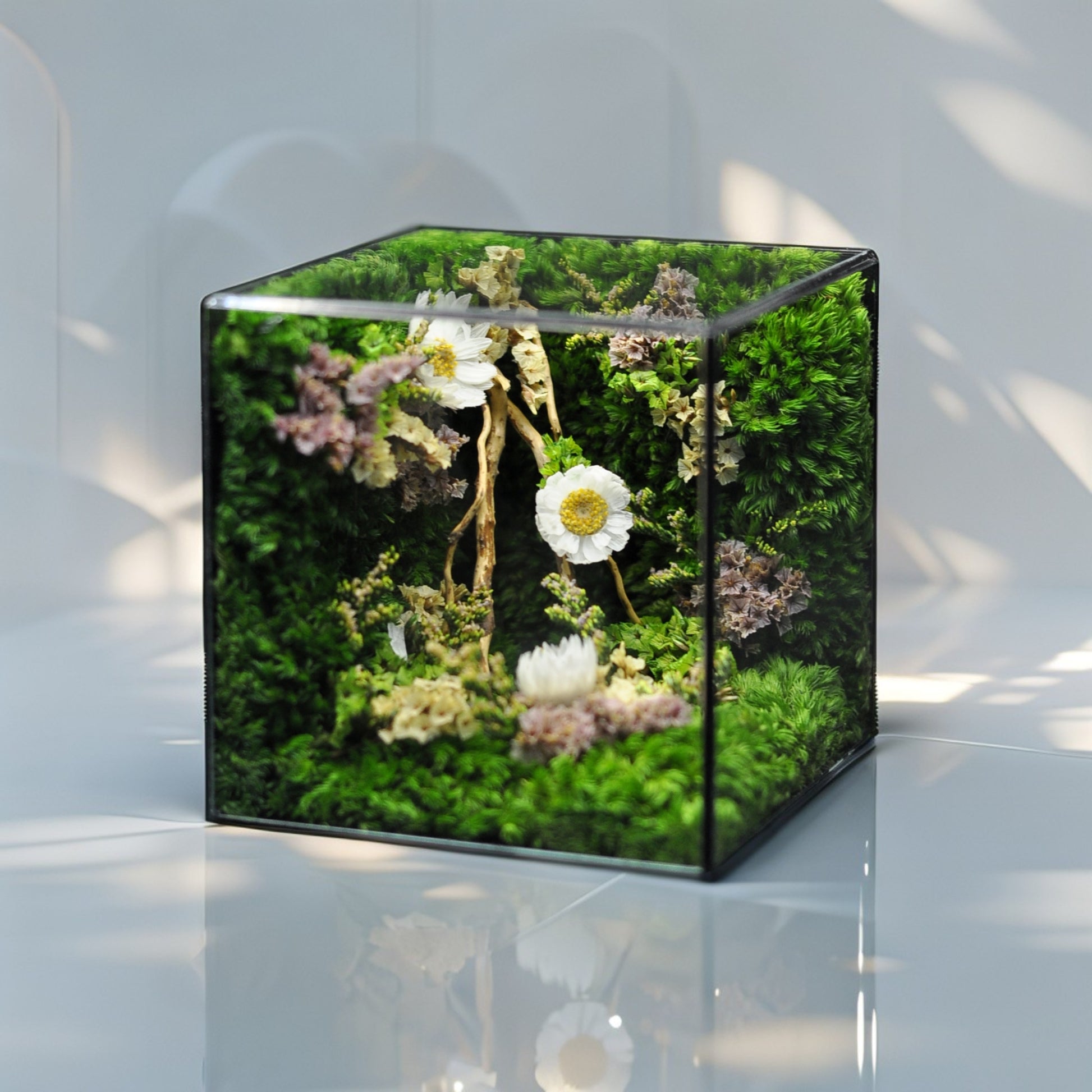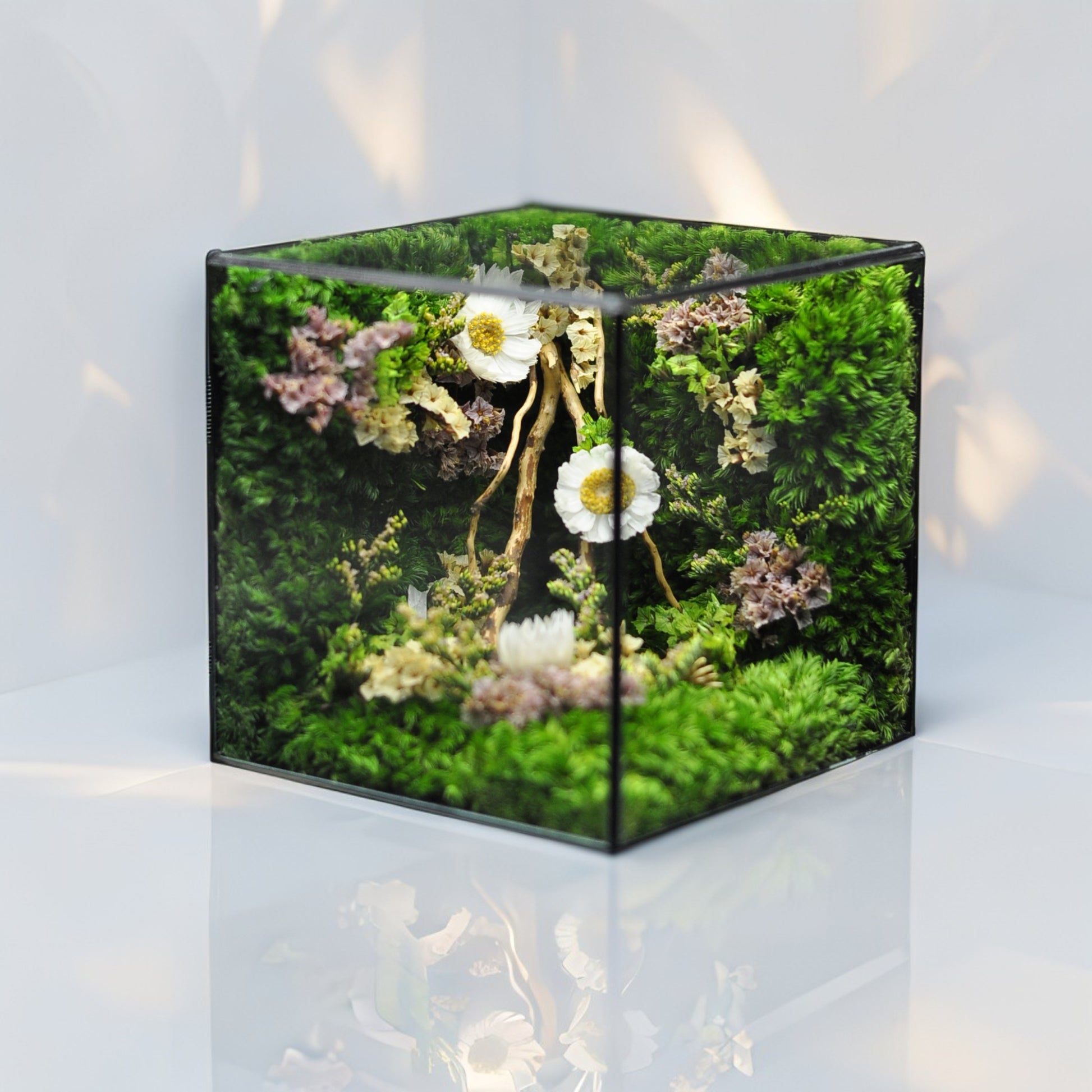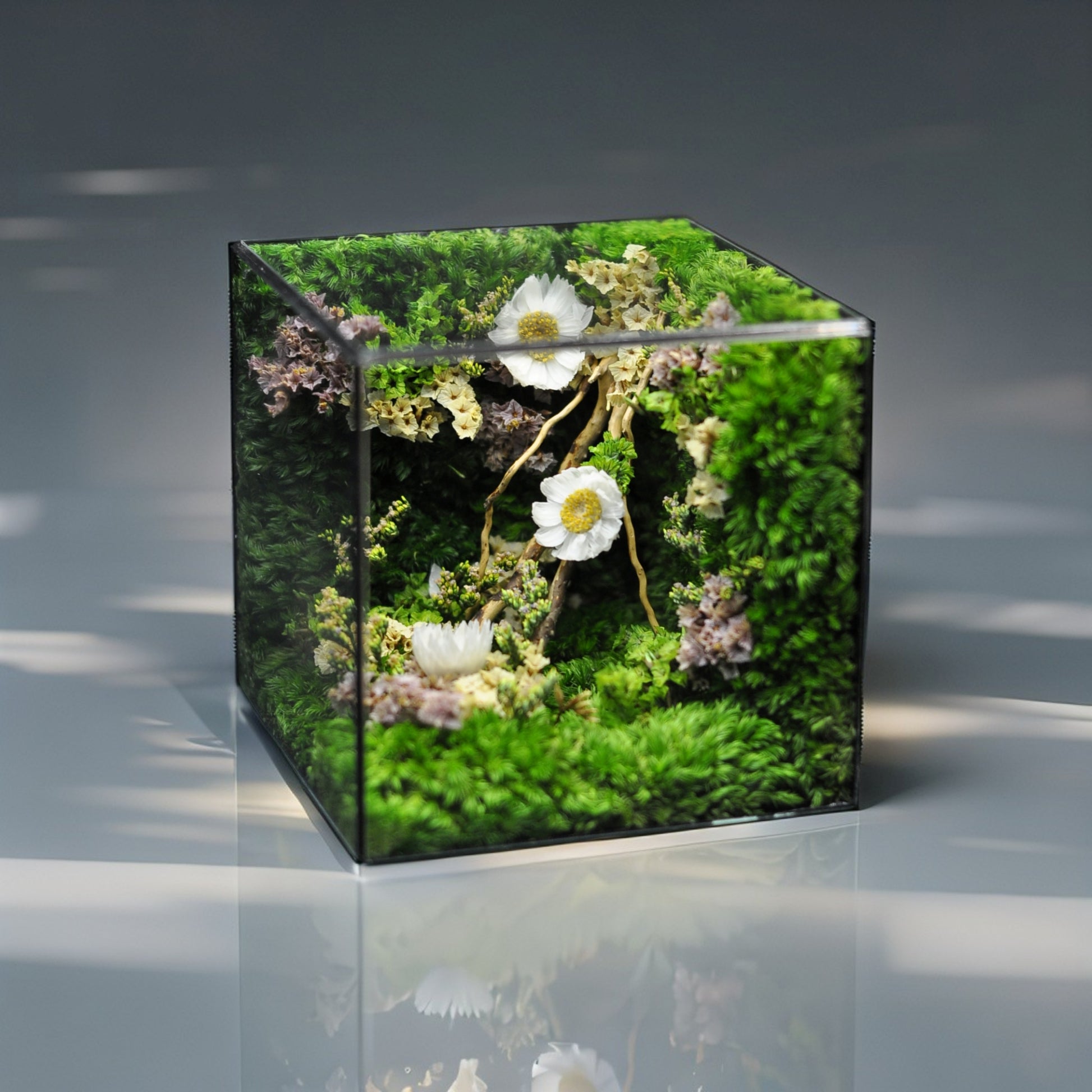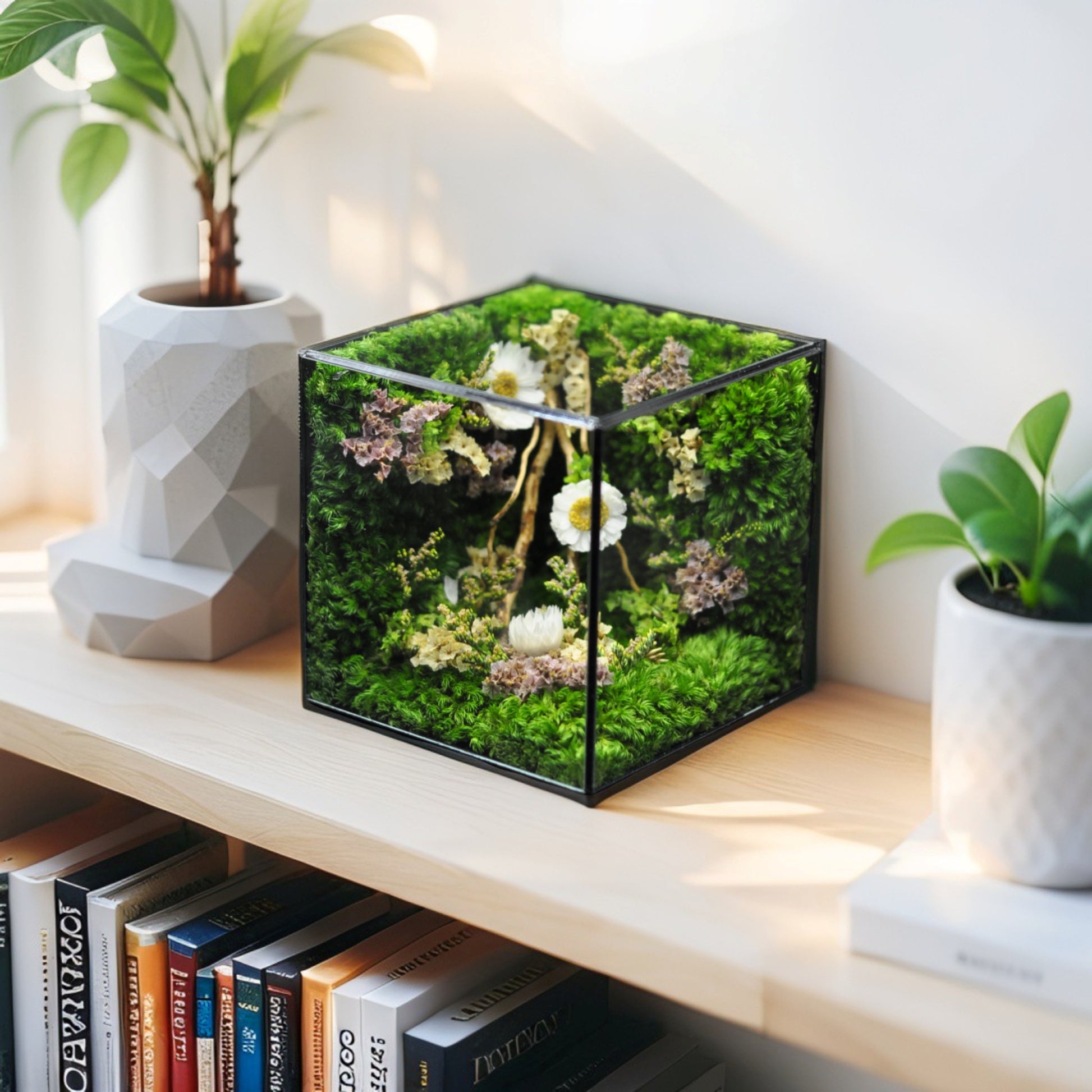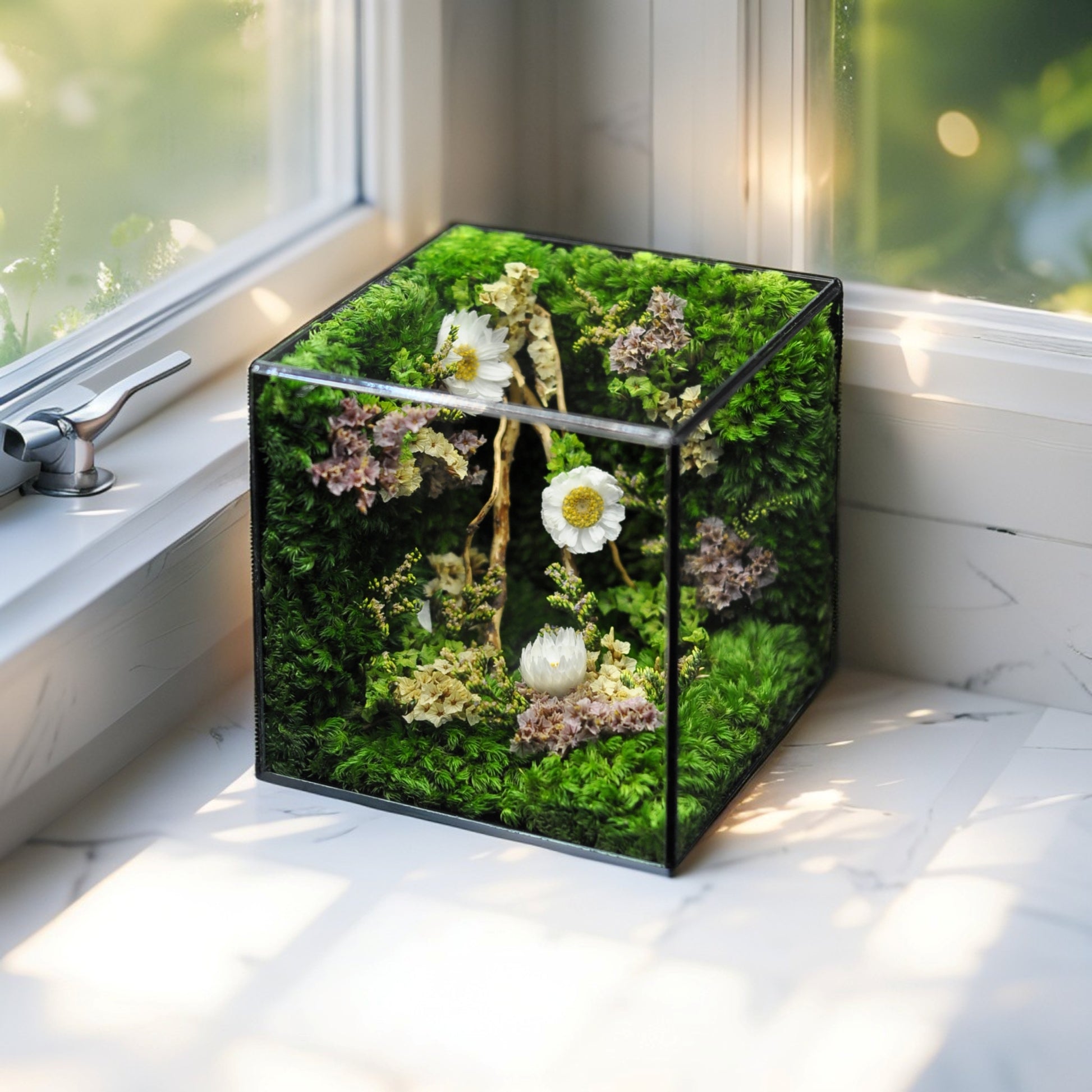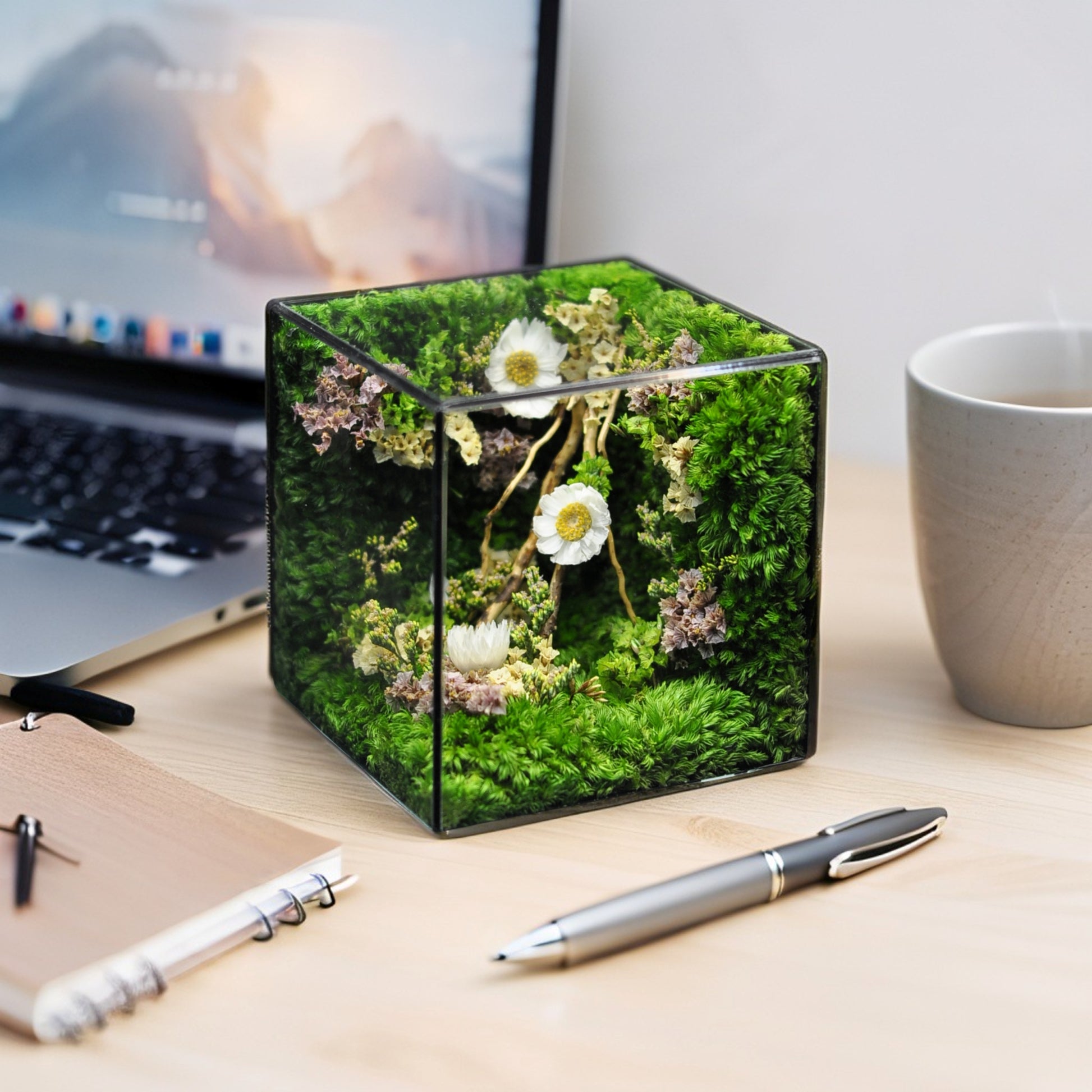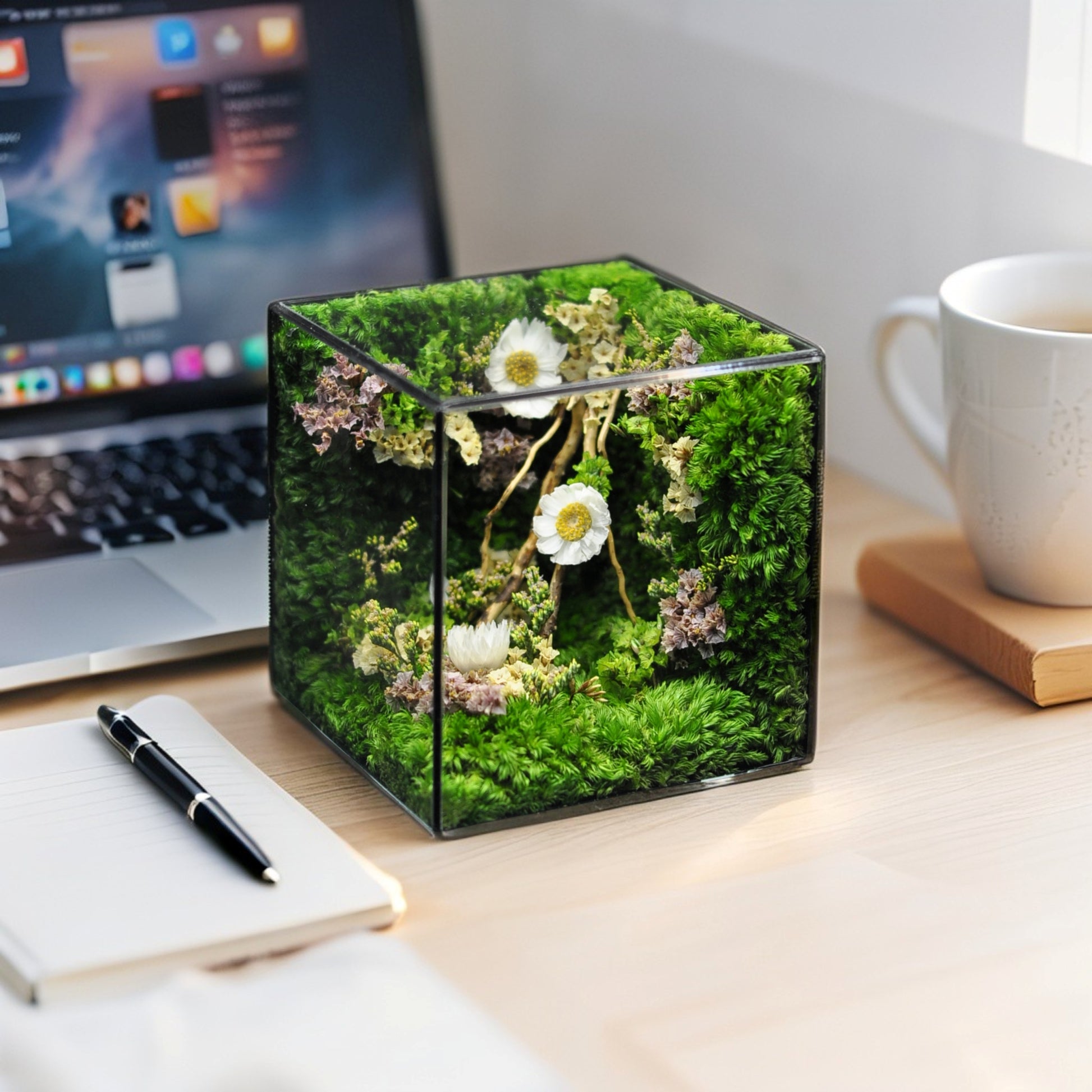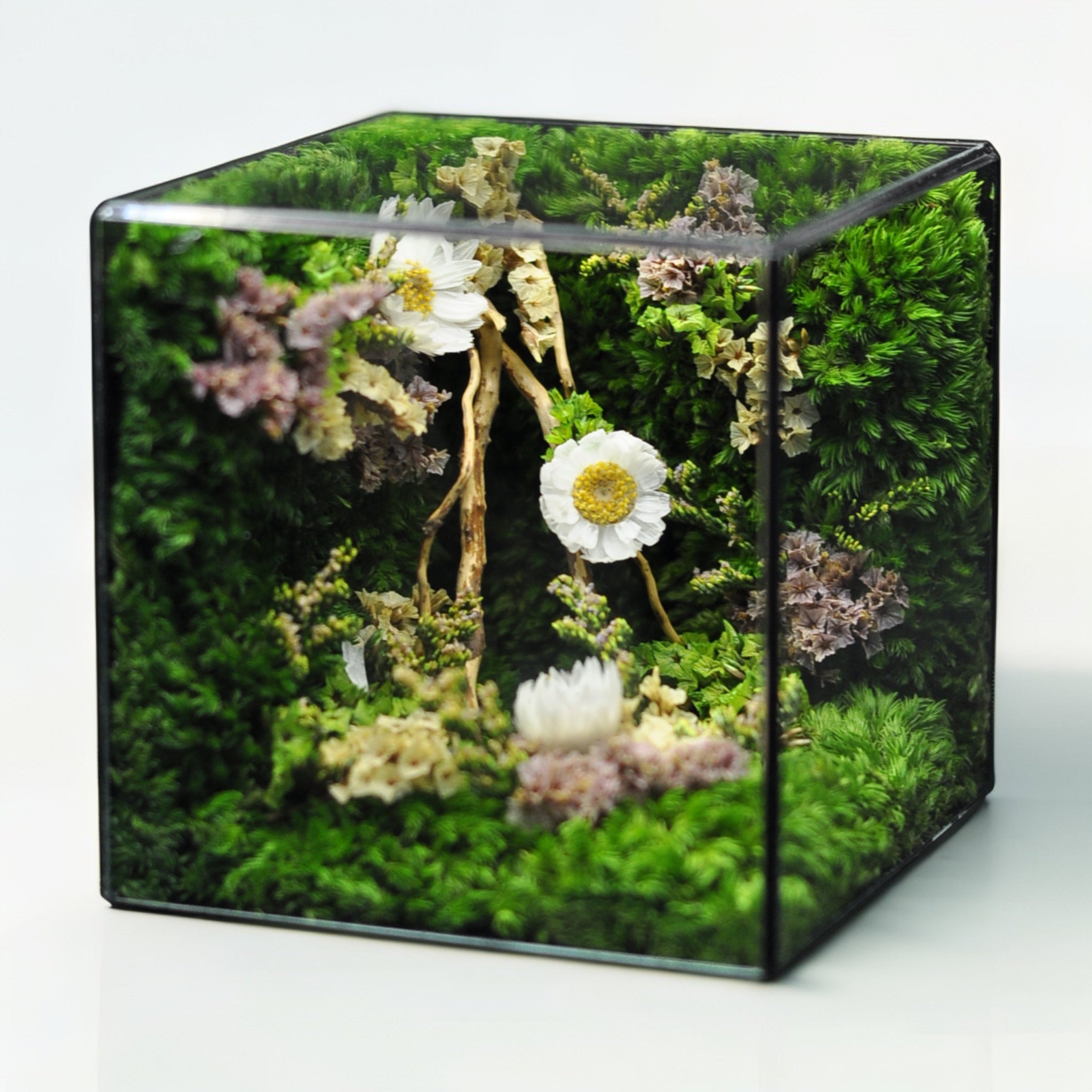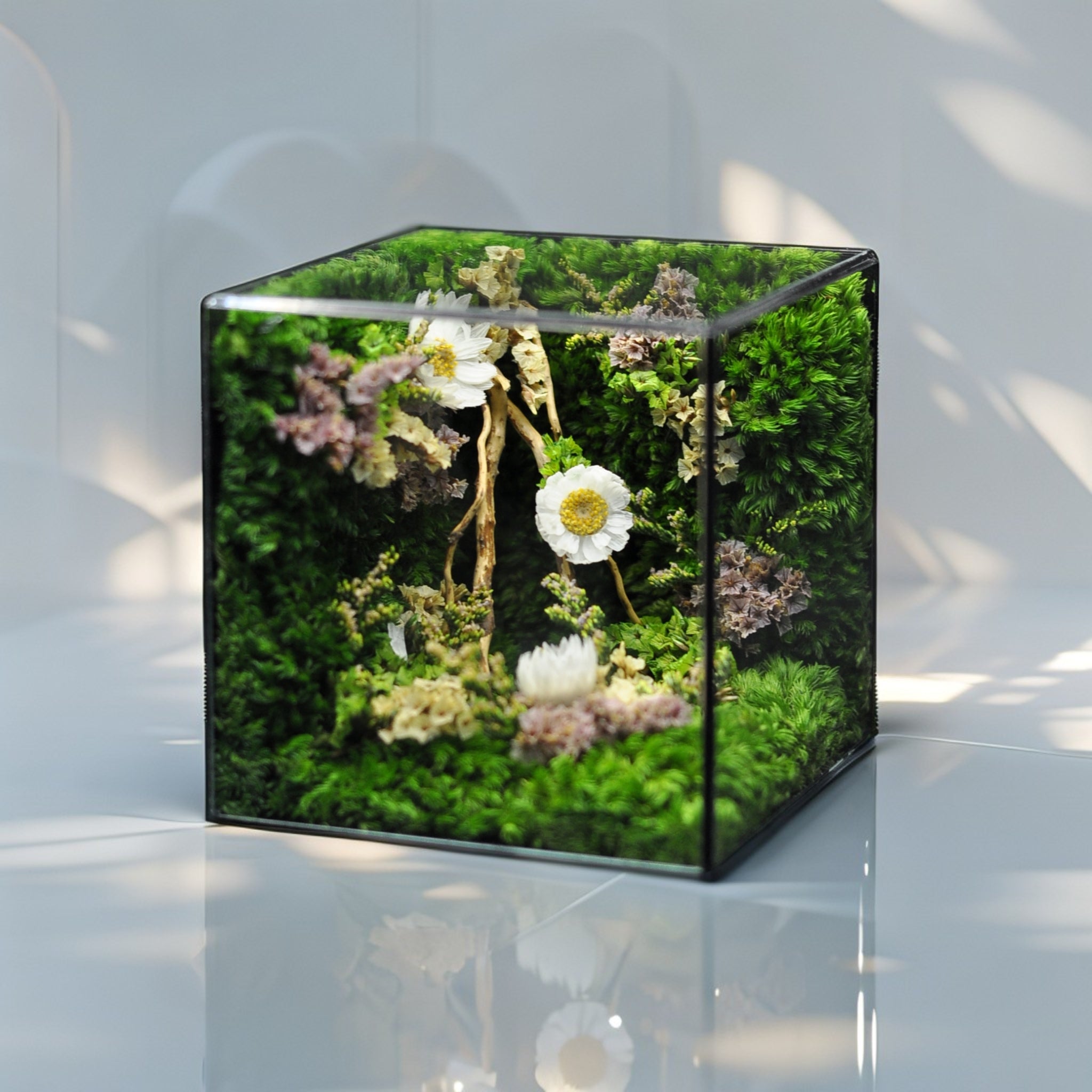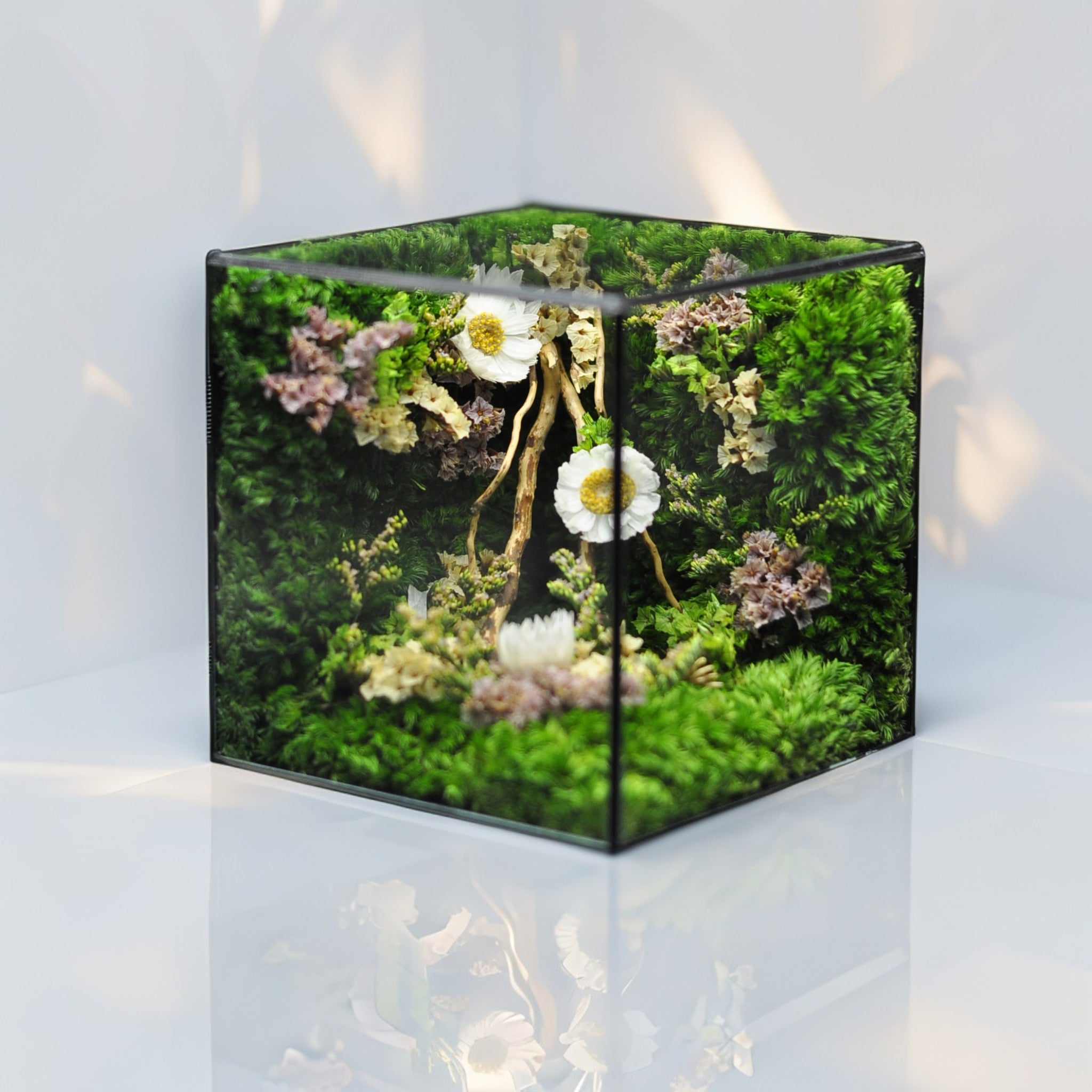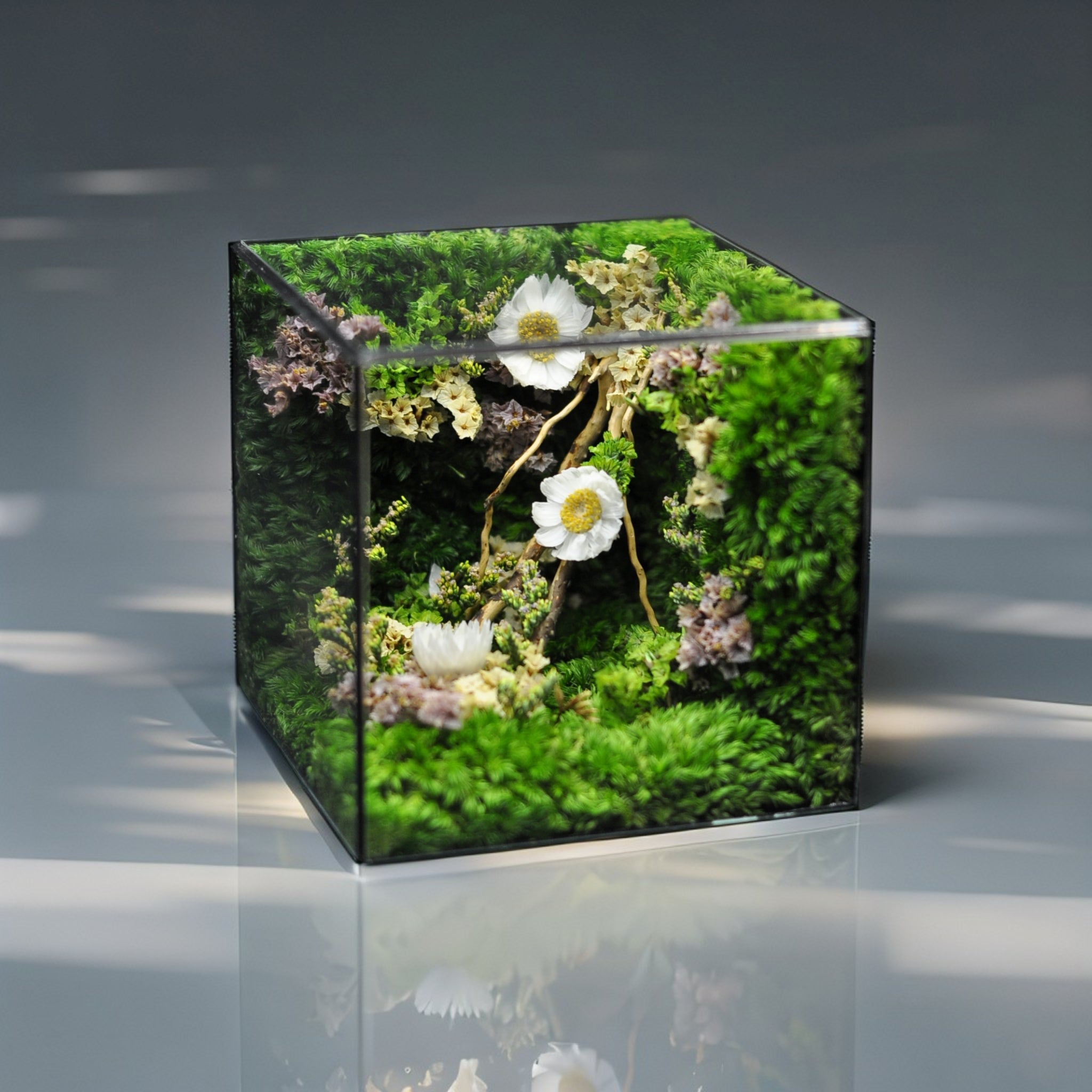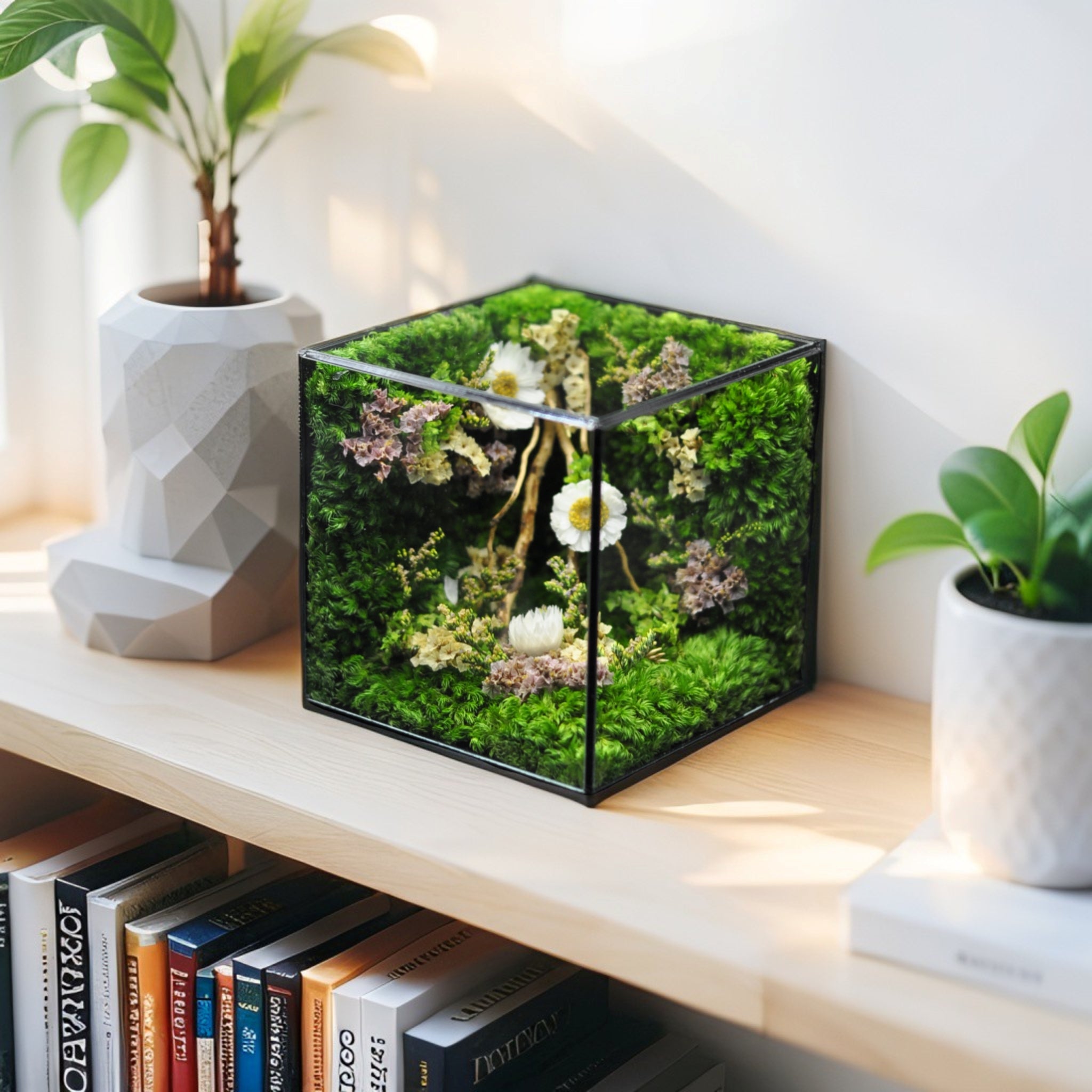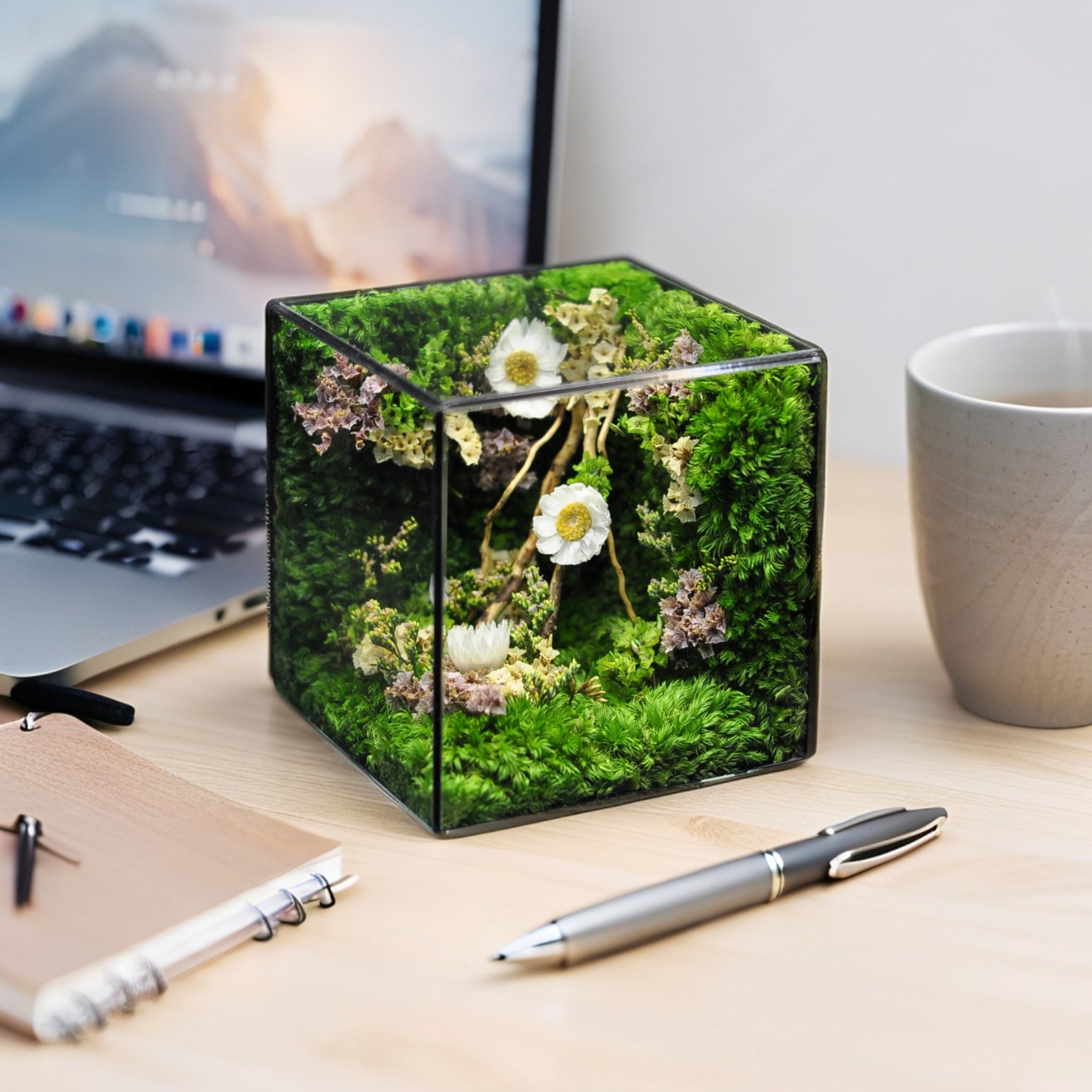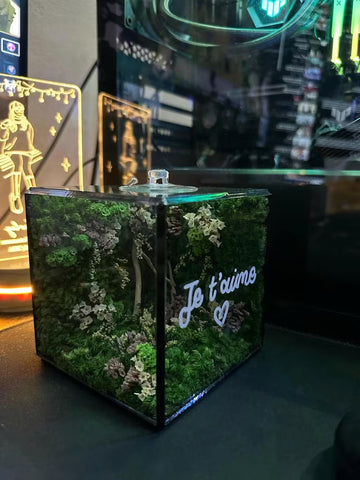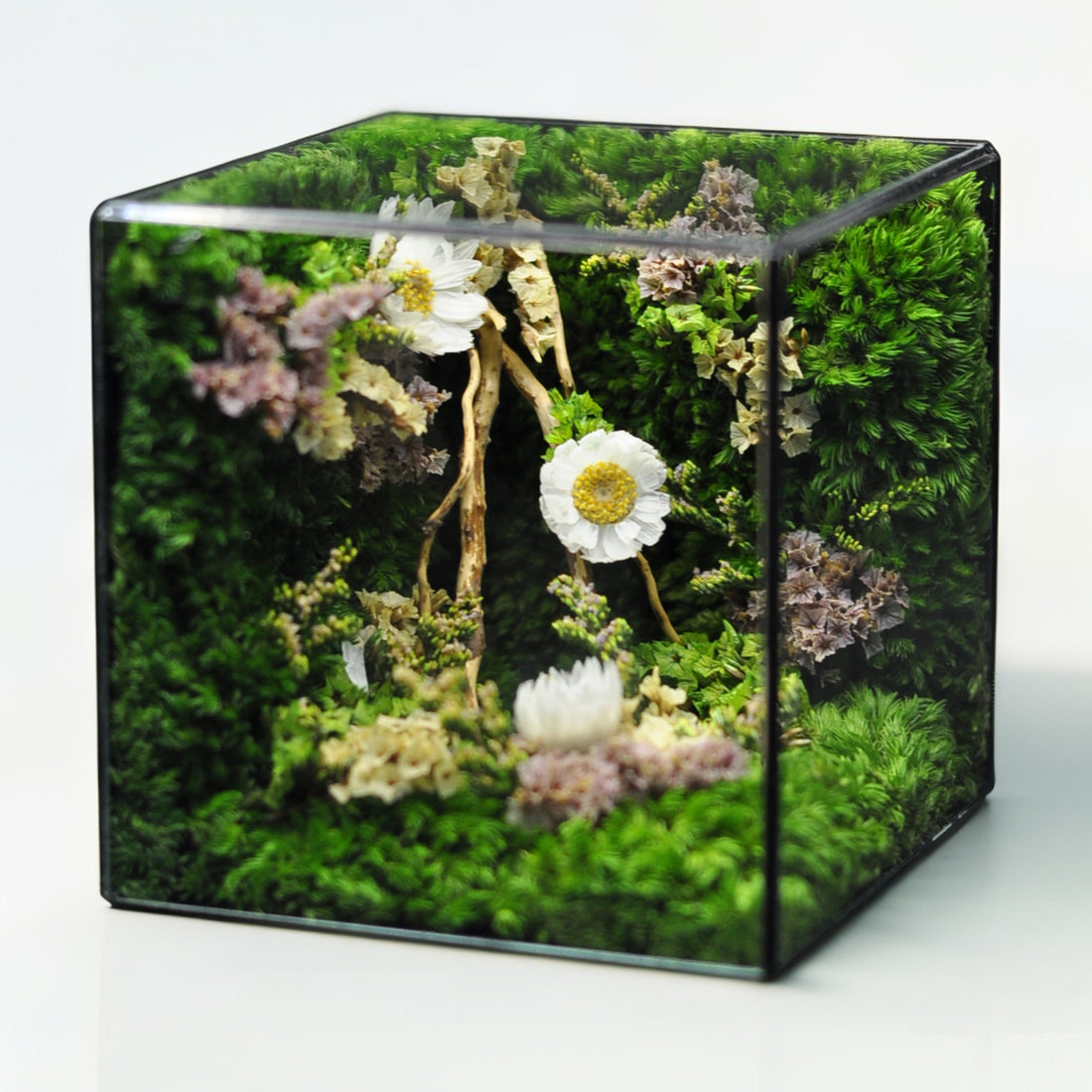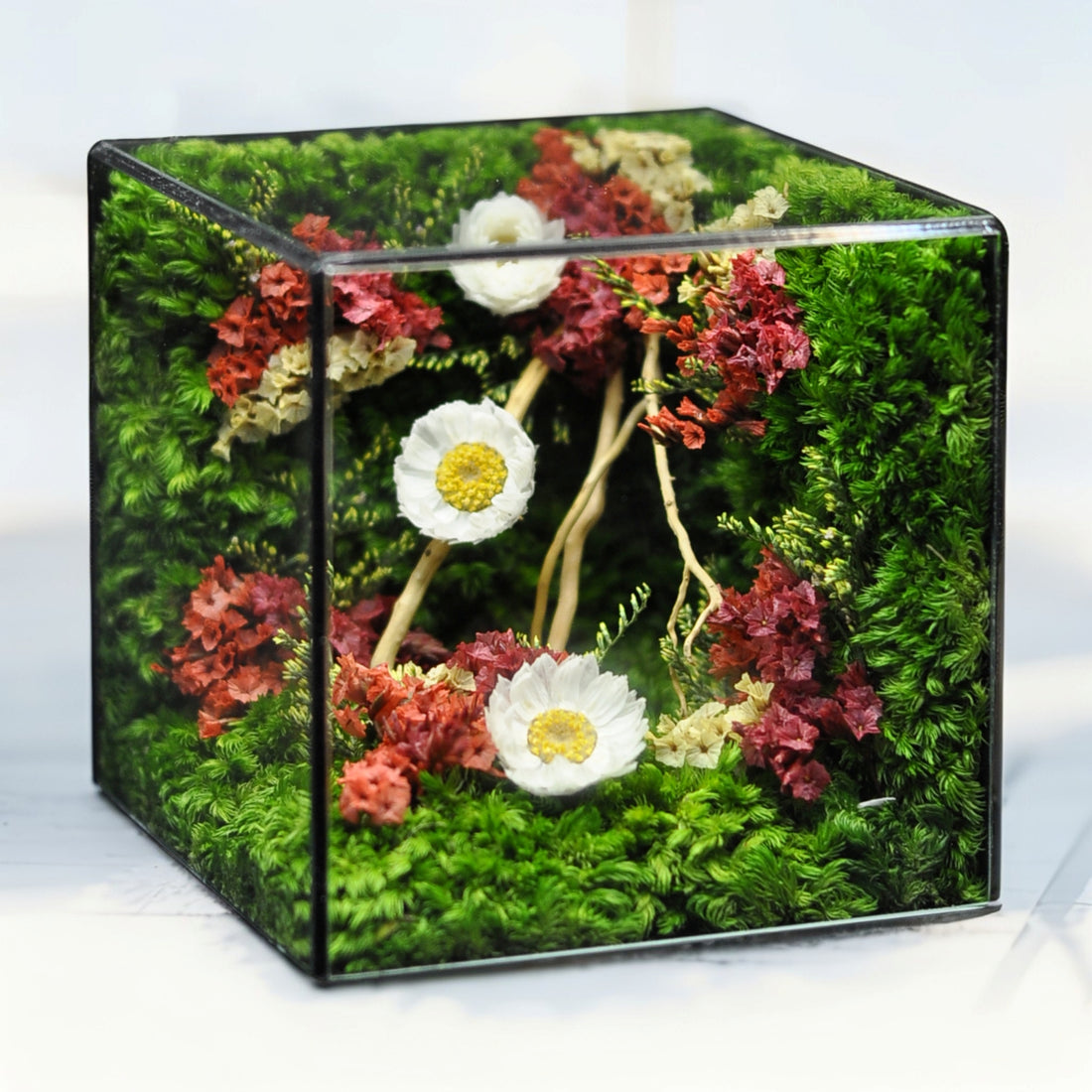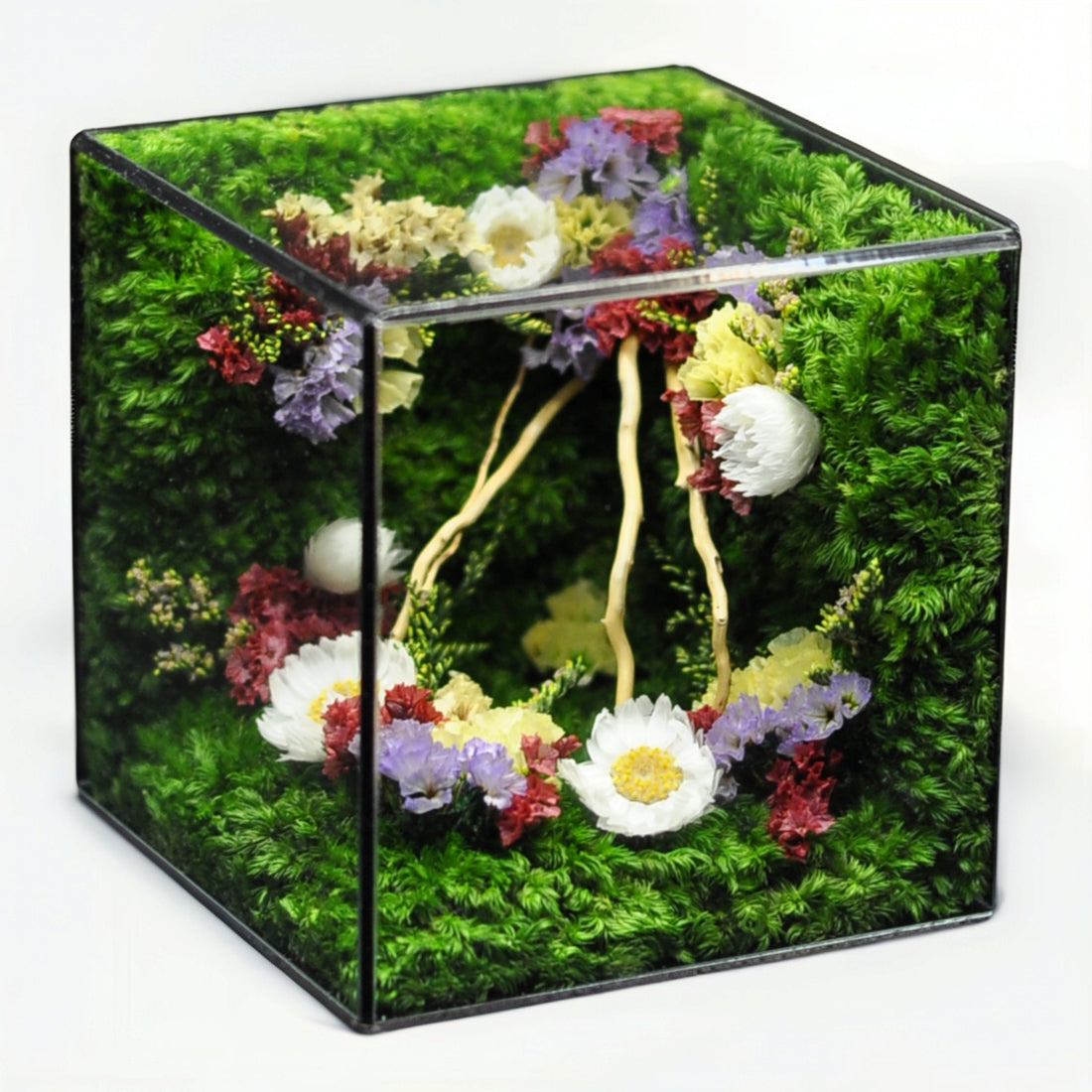Key Takeaways
Preserved flowers offer a unique blend of natural beauty and lasting durability, standing apart from traditional fresh blooms. Understanding their definition, creation methods, and advantages reveals why they're gaining popularity for decor and gifting. Below are the key takeaways from this guide.
- Understand the essence: Preserved flowers offer lasting vibrancy distinct from fresh blooms. Unlike fresh flowers that wilt, preserved flowers undergo a treatment process that replaces the sap with a preserving substance, maintaining their natural look and feel for a long time.
- Mastering longevity: Key methods like glycerin and silica gel extend bloom life. Various techniques, most commonly using glycerin solutions or drying agents like silica gel, are employed to halt the natural decay process and preserve the flower's form and color.
- Enjoy lasting beauty: Preserved flowers endure for years, not days. One of their primary benefits is an extended lifespan, typically lasting anywhere from several months to several years with proper care, offering a sustained aesthetic appeal.
- Simplify floral care: They require no water and minimal maintenance. Once preserved, these flowers require no watering, sunlight, or trimming, making them incredibly low-maintenance compared to fresh cut flowers.
- Embrace eco-friendly blooms: Their lifespan significantly reduces floral waste. Due to their longevity, preserved flowers drastically cut down on the frequent replacement needed for fresh arrangements, contributing to less waste and a more sustainable decor option.
- Transform spaces & moments: Ideal for long-term decor and memorable gifts. Their enduring nature and variety make them perfect for creating permanent floral arrangements for home or event decor, and they serve as a thoughtful, lasting gift alternative.
Preserved flowers represent an innovative approach to enjoying natural beauty without the constraints of fragility and decay associated with fresh blooms. In the following sections, we will delve deeper into the specific preservation methods, explore their full range of benefits, and guide you on how to care for and use these fascinating florals.
Introduction
If you’ve ever wondered what are preserved flowers and how a delicate rose can stay fresh-looking for years, you’re in the right place. These blooms undergo a clever treatment that replaces their natural sap with stabilizing agents—locking in vibrant color and velvety texture far beyond the usual bloom cycle.
By using techniques like glycerin infusion and silica gel drying, preserved flowers deliver lasting beauty with zero watering and minimal upkeep. They slash floral waste, making them an eco-friendly choice for home décor and thoughtful gifts. Let’s dive into the definition, key preservation methods, and benefits that make preserved flowers a standout for long-term charm.
What Are Preserved Flowers?
Imagine gifting a bouquet that never wilts—one that holds its vibrant hues through birthdays, anniversaries and beyond. That’s the magic of preserved flowers. But what are preserved flowers, exactly, and how do they compare to fresh-cut blooms?
Definition: Understanding Preserved Flower Meaning
Preserved flowers are real botanicals treated with specialized stabilizing agents to maintain their fresh-picked appearance for months—or even years. During preservation, natural plant sap is replaced with solutions (like glycerin or silica gel) that lock in petal shape and color. Unlike simple air-dried arrangements, preserved blooms retain softness, dimension and the vivid tones of freshly cut petals.
Before we dive into preservation methods, let’s see how preserved flowers stack up against fresh blooms.
Preserved Flowers vs. Fresh Blooms
What is the difference between preserved flowers and fresh flowers?
-
Lifespan
• Fresh flowers last about 1–2 weeks with regular watering and trimming.
• Preserved flowers remain vibrant for 12–36 months depending on species and treatment (according to the Society of American Florists). -
Maintenance
• Fresh: daily water changes, occasional pruning, indirect light.
• Preserved: zero watering, minimal upkeep, just occasional dusting. -
Appearance
• Fresh: natural fragrance, gradual wilting and color fade.
• Preserved: stable shape, true-to-life color, no fragrance loss.
Key Preservation Methods
Glycerin Flower Preservation
Glycerin infusion swaps a flower’s internal moisture for a water-glycerin solution, yielding pliable, lifelike petals.
- Trim stems at a 45° angle.
- Submerge in a 1:2 glycerin-to-water mix (higher glycerin ratios yield softer petals; lower ratios make them firmer).
- Leave for 2–3 weeks until blooms feel supple.
Ideal for: Roses, hydrangeas, ferns, eucalyptus.
Equipment & Cost: Minimal—glass jars and food-grade glycerin. DIY cost under \$20 for 50 stems; commercial vats and distilled glycerin scale up for florists.
Case Study: According to Green Petal Florists in Portland, processing 500 premium roses via glycerin infusion extended shelf life from two weeks to six months, reducing estimated restocking costs by \$4,000 per month.
Pro Tip: Use distilled water to prevent mineral deposits and keep solutions in a cool, dark place to avoid discoloration.
Troubleshooting: If petals darken, flush twice-weekly with fresh solution; mold risk? Ensure stems are fully submerged and containers are sanitized.
Silica Gel Drying Method
Silica gel acts as a granular desiccant, drawing moisture without crushing delicate structures.
- Pour a 1–2 cm layer of silica gel in an airtight container.
- Nestle blooms on top, then gently cover with more gel.
- Seal and wait 5–7 days.
- Brush off excess granules with a soft paintbrush.
Benefits: Exceptional color retention; petals remain plump.
Case Study: BloomCraft’s silica-dried rose kits sold out in 48 hours, driving a Q4 revenue jump of 35%.
Pro Tip: Recycle silica gel by baking at 120 °C for 2 hours; stir periodically to prevent caking.
Troubleshooting: For dense blooms, remove core petals mid-process to improve gel penetration.
Air Drying and Pressing Techniques
Traditional methods require no chemicals—just time and the right environment.
Air Drying:
- Hang stems upside down in a dark, well-ventilated, low-humidity room (15–30 °C) for 2–4 weeks.
- Best for: Statice, lavender, baby’s breath.
Pressing:
- Place flowers between wax paper and cardboard in a flower press or heavy books.
- Leave undisturbed for 1–3 weeks.
- Best for: Daisies, pansies, ferns.
Pro Tip: Speed up air drying by using a dehydrator set to 35–40 °C for 24–48 hours.
Other Techniques: Freeze-Drying and Beyond
Freeze-drying preserves three-dimensional form under vacuum.
- Flash-freeze blooms to –40 °C.
- Apply vacuum pressures around 0.1 mbar to sublimate ice crystals.
- Finish at slightly warmer temperatures to remove residual moisture.
Advantages: Unparalleled shape fidelity and color.
Limitations & Cost: Commercial freeze dryers range from \$5,000–\$20,000; home units are emerging but carry steep price tags and small capacity.
Case Study: Luxe Events NYC integrated freeze-dried orchids into large-scale installations, reducing annual replacement costs by 30% (approx. \$12,000 saved), according to the company’s event director.
Types of Preserved Flowers
Popular Varieties for Preservation
- Roses: Thick petals, high moisture content; classic reds, pinks, creams.
- Hydrangeas: Voluminous clusters that hold sculptural form.
- Baby’s Breath: Airy fillers that dry evenly and maintain shape.
- Daisies & Chrysanthemums: Sturdy petals, bright whites and pastels.
- Orchids & Ferns: Textured, exotic silhouettes (often freeze-dried for detail).
Selection Criteria: Petals with moderate thickness and uniform moisture content preserve best.
Specialty and Exotic Preserved Flowers
- Dyed Eucalyptus: Trendy copper or rose-gold hues via tinted solution.
- Preserved Succulents: Water-dense leaves retaining plump texture.
- Bleached Grasses & Bunny Tails: Neutral palettes for minimalist styling.
- Color-Treated Wildflowers: Ombre, neon and metallic finishes for event accents.
Did You Know? Eucalyptus preserved in a copper sulfate bath develops a subtle metallic sheen prized in high-end arrangements.
Benefits of Preserved Flowers
Long-Lasting Vibrancy and Longevity
- Lifespan: 12–36 months under optimal care.*
- Comparison: Fresh bouquets fade in 7–14 days; preserved blooms endure years.
*According to the Society of American Florists, durability varies by species and preservation method.
Low Maintenance and Care-Free Enjoyment
- No watering, pruning or fertilizer required.
- Ideal for busy homes, office displays and low-light spaces.
- Allergy-friendly—pollen-free décor safe for sensitive environments.
Eco-Friendly and Sustainable Choice
- Waste Reduction: Life-cycle analysis by the Society of American Florists shows up to 60% less floral waste compared to weekly fresh deliveries.
- Carbon Footprint: Fewer restocks and transport runs cut emissions by roughly 50%.
- Aligns with zero-waste weddings and green events.
Versatility in Decorating and Gifting
- Craft long-lasting centerpieces, wreaths or terrariums.
- Perfect for keepsake bouquets that commemorate special occasions.
- Pair preserved stems with dried foliage or personalized charms for unique gifts.
Care Tips for Preserved Flowers
Optimal Conditions for Longevity
- Store in a cool, dry spot (15–25 °C) with relative humidity below 50%.
- Keep out of direct sunlight and away from heat sources (radiators, vents).
- Handle minimally to prevent petal oils from transferring to hands.
Cleaning and Maintenance Practices
- Use a hairdryer on “cool” to blow off dust.
- Gently brush petals with a soft-bristled brush or compressed air can.
- Rotate arrangements occasionally for even light exposure.
Pro Tip: Place preserved wreaths in sealed plastic bags with a desiccant pack if storing seasonally.
Creative Uses and Inspiration
Home Decor Ideas with Preserved Flowers
- Shadow Boxes & Wall Art: Frame single blooms for botanical galleries.
- Everlasting Wreaths: Create door-hanging accents that last through seasons.
- Terrariums & Table Centerpieces: Combine stems with moss, stones or fairy lights.
Event and Wedding Applications
- Bouquets & Boutonnieres: Rehearsal-to-reception continuity without wilting.
- Garlands & Venue Installations: Reuse arches, table runners and backdrops across multiple events—Eternal Weddings Ltd. saved 60% on floral waste this way.
Gifting and Personalized Arrangements
- Customized Gift Boxes: Pair stems with handmade candles or keepsake notes.
- Resin Jewelry Embedding: Encapsulate micro-petals in pendants and earrings.
- Pressed Petal Stationery: Adorn cards and invitations with colorful, flat blooms.
Frequently Asked Questions
What is the difference between preserved flowers and fresh flowers?
Preserved flowers undergo treatments (glycerin, silica gel, freeze-drying) that lock in color and texture, lasting 1–3 years, while fresh blooms wilt in 1–2 weeks and require daily care.
How long do preserved flowers last?
Under ideal conditions (cool, low humidity, indirect light), most preserved flowers retain their appearance for 12–36 months, depending on species and method.
What are the most effective methods to preserve flowers?
Glycerin infusion yields soft, flexible petals; silica gel drying offers vivid color retention; freeze-drying provides the highest fidelity in shape and detail.
Can preserved flowers be rehydrated or recolored?
No—preservation replaces natural moisture, so rehydration isn’t possible. For recoloring, use floral-safe sprays or dyes on unsealed areas, but test on a single bloom first.
How do I refresh the scent of preserved flowers?
Lightly mist petals with a water-based floral mist or tuck in a scented sachet—avoid oil-based fragrances that can stain.
Further Reading:
- Society of American Florists: Floral Preservation Guidelines
- International Journal of Plant Sciences: “Advances in Flower Stabilization”
Conclusion
Preserved flowers combine nature’s beauty with enduring appeal, offering months or even years of vibrant color and form through methods like glycerin infusion, silica gel drying, air drying, and freeze-drying. Their minimal upkeep, allergen-free profiles, and significant waste reduction make them an eco-conscious choice for home décor, events, and personalized gifts. By selecting the right preservation technique and following simple care guidelines—such as dusting and avoiding direct sunlight—you can create stunning, long-lasting arrangements that fit any aesthetic. From wedding bouquets to shadow-box art, preserved blooms open a world of creative possibilities. Consider integrating them into your next project or celebration, and experience firsthand how these everlasting flowers can elevate your space and commemorate life’s special moments.
Frequently Asked Questions (FAQ)
Q: What is the difference between preserved flowers and fresh flowers?
A: Preserved flowers undergo treatments (glycerin, silica gel, freeze-drying) that replace natural sap and lock in shape, color, and softness for 12–36 months, while fresh blooms last 1–2 weeks, require daily watering and gradually wilt and fade.
Q: How long do preserved flowers last?
A: Under ideal conditions (cool, low humidity, indirect light), most preserved flowers retain their appearance for 12–36 months, depending on species and preservation method.
Q: What are the most effective methods to preserve flowers?
A: Glycerin infusion yields soft, pliable petals; silica gel drying preserves vivid color and petal plumpness; and freeze-drying offers the highest fidelity in three-dimensional shape and color.
Q: Which flower varieties are most popular for preservation?
A: Roses, hydrangeas, baby’s breath, daisies, chrysanthemums, orchids and ferns are commonly preserved thanks to their moderate petal thickness and uniform moisture content.
Q: What are the benefits of using preserved flowers in home decor and gifting?
A: They offer long-lasting vibrancy (12–36 months), require no watering or pruning, are allergy-friendly and eco-friendly—reducing floral waste by up to 60% and cutting emissions by roughly 50%—and work in versatile decorations and keepsakes.
Q: How should preserved flowers be cared for to maximize their lifespan?
A: Store them in a cool, dry spot (15–25 °C, humidity below 50%), keep out of direct sunlight and heat sources, and handle minimally to prevent oil transfer from hands.
Q: How do I clean and maintain preserved flowers?
A: Use a hairdryer on the cool setting or compressed air to remove dust, gently brush petals with a soft-bristled brush, rotate arrangements for even light exposure, and, for seasonal storage, place wreaths in sealed bags with a desiccant pack.


